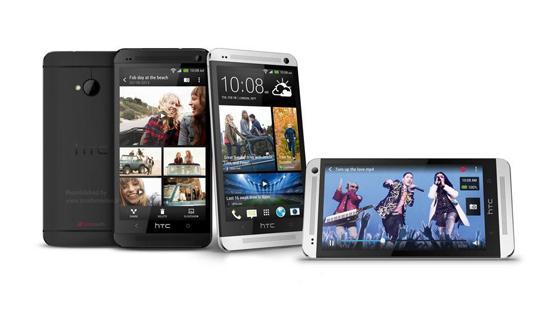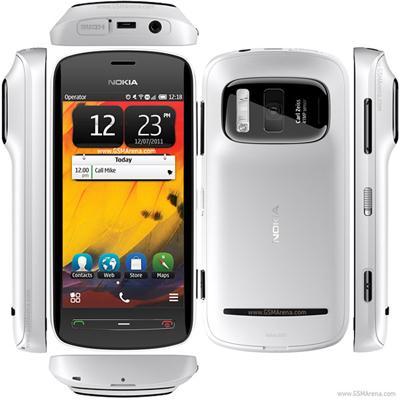
There’s a lot of hubbub going on about all the new phones popping up lately, and although several have sparked my interest the HTC One is the new “Apple” of my eye, if you will (hurr hurr hurr - okay, that was a tasteless joke). With a 4.7 inch 1080p HD display, you’d think “Okay, what makes this device any different than anything else coming out this year?” That’s where we have to scratch below the surface to get to the juicy details of the soon-to-be released HTC One.
Before we get down to all the good stuff on the inside of the device, the actual hardware, I have to admit, is one of the most pleasing designs I’ve ever seen from HTC. I wasn’t terribly amused with the HTC EVO 4G LTE (for Sprint) and I think it had to do with the red colored trim that the device features in both the black and the white variants. While I enjoy having different color options for a phone, having a non-neutral colored trim on all variants limits the use of other funky colors that I might want to use on a protective case. Teal blue or purple with red, in my opinion, just doesn’t look that good together; but stand-alone would be very viable colors that I would choose to decorate my device with. The hardware is made out of aluminum which gives it a more solid feel than phones that opt to use cheaper and lighter materials, which is something I’ve always liked about my iPhone (the solid, heavy feeling – although it’s just a feeling, the glass itself is very unnerving). The device is described as being thin but feeling good with a little weight in the hand, and also comfortable to hold. While I haven’t experienced this myself, it’s good to know that others who have already like the way it feels. Plus, no funky-colored detail. It looks like it will come in a white/silver combination or an all black decor from what the pictures show, and that’s a design I can dig.
Now we can venture in to what makes the HTC One stand out from the rest. It has a very nice 1.7 GHz quad-core Snapdragon 600 CPU, 2 GB of RAM, 2,300 mAh battery and it will come with either 32 GB or 64 GB of internal memory. The device will come out of the box with Android 4.1 Jelly Bean and will be the first HTC device to feature Sense 5. The introduction of Sense 5 also brings a new feature from HTC called Blink Feed.
Blink what?
Blink Feed. On the HTC One, Sense 5 starts out by using just two homescreens. The first homescreen will be your traditional run-of-the-mill Android homescreen where you can customize it with widgets, apps, and folders. Your second homescreen will feature Blink Feed, which is a social media hub that provides you with social news and content at a glance. A “personal live stream straight to your home screen” as HTC puts it. Visually, Blink Feed is reminiscent of Windows Phone Live Tiles, with a little less “simplicity” and more “busy” going on. Strangely enough, I like it. Perhaps it’s because it looks so much like “Android Meets Windows Phone”, to which I’ve been debating between after my upgrade is available, but the very idea is something that I can get on board with. I enjoy knowing what’s going on as it happens as much as the next person, so having it available as soon as I unlock my screen instead of flipping from app to app sounds very appealing to me.
Now to the camera. The front-facing camera on the HTC one is reported to have a 2.1 megapixel camera. Sounds decent enough, which means the rear camera will probably have something along 8-13 megapixels right? Wrong. The HTC One actually features a 4 megapixel camera, also dubbed “UltraPixel Camera” due to the additional features the camera offers for quality photos. That’s not a typo, folks. Not 40, and not 14; just 4. At a glance, that might cause a lot of people to be turned off from considering this device right now. I can’t blame them – we’ve been taught (and shown) that the higher the megapixel the better the image. With HTC having a more than terrible year in 2012, and with the HTC One being one of their most anticipated devices of 2013, why would they risk so much by incorporating a measly 4-megapixel camera with a fancy name into their device?
HTC acknowledges the risk they’re taking with such a decision, which hopefully means that whatever tricks they have up their sleeve to create beautiful imaging actually works. Without the device being in my hands I can’t say for sure whether the methods will work, but HTC has already laid out why they made such a decision in the first place.

First of all, to have a camera with more megapixels you need the sensor to support it. More megapixels equals bigger sensor, and bigger sensor means bigger lens, and bigger lens means bigger phone. Take for example the Nokia 808 PureView, which had a pretty decent-sized hunchback protruding from the back-end of the already bulky device. It was necessary to support the 41-megapixel sensor inside the device. HTC realizes that thin is in, so taking the necessary measures to ensure the phone stays thin included not giving the camera too many megapixels. However, we’ve seen plenty of thin devices that feature 8-megapixel cameras, so what’s the deal? HTC does have a second reasoning behind the decision, and that reason is lighting.
Basically, in the imaging world, more megapixels equal more signal-noise ratio. The noise in these photos kind of overbear the amount of light that is received in photos if other components of the camera don’t match up, so HTC opted for a lower megapixel to help improve the lighting. As I said before, we’ve been brought up with these smartphones under the impression that higher megapixels mean better photos, and so far, from what I can see, that’s held mostly true. I’ll just have to wait and see how the explanation actually holds up. One of the things that recently sparked my interest in the Nokia Lumia 920 is its ability to take quality pictures in low-lit environments, so perhaps that aspect is more important that I originally thought it was. I would be lying if I said I wasn’t a little wary on how good the pictures will actually turn out though.
Other notable features of the HTC One include the dual front-facing speakers on the device and of course HTC Zoe, which is supposed to kind of revolutionize how we view our photo gallery and incorporate snippets of recordings in there and in a sense bring the gallery “to life”.
Overall, I am really excited about the HTC One. As long as they can prove that higher megapixels isn’t always what makes an image crisp and clear, I have a good feeling that this device will become one of my favorites this year. Will it be the One phone to rule them all (another bad joke, apparently I’m just full of them today) or will HTC have to do more to sway the consumers away from phones like the Galaxy S IV and the iPhone? Let me know your thoughts in the comments!